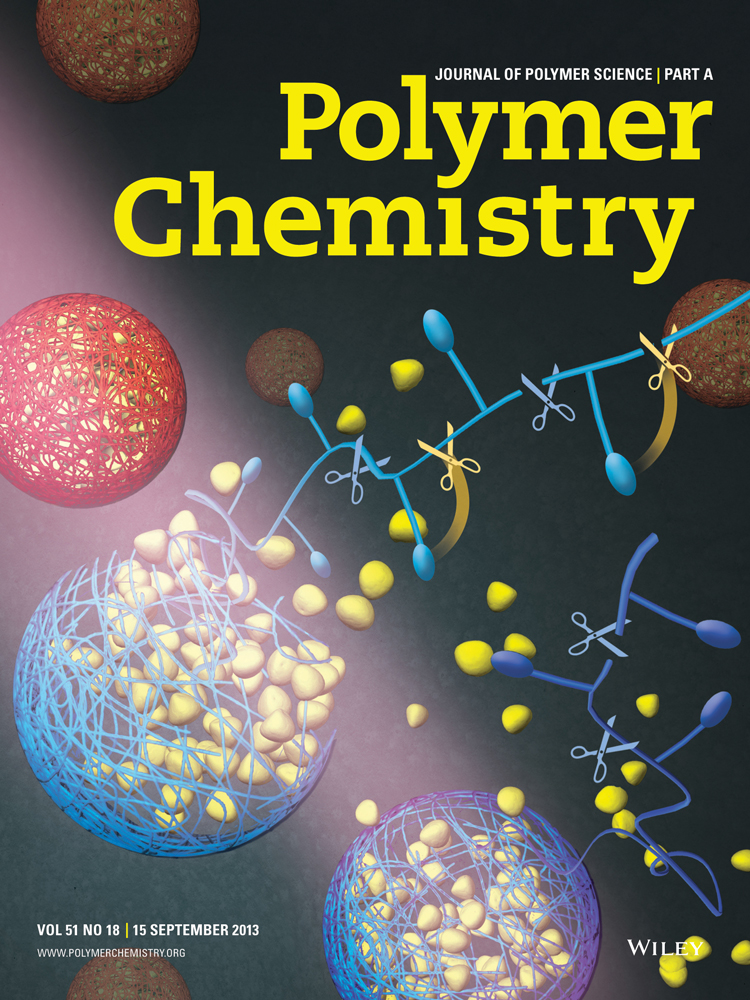Synthesis of polydopamine-coated graphene–polymer nanocomposites via RAFT polymerization
ABSTRACT
Graphene-polymer nanocomposites have significant potential in many applications such as photovoltaic devices, fuel cells, and sensors. Functionalization of graphene is an essential step in the synthesis of uniformly distributed graphene-polymer nanocomposites, but often results in structural defects in the graphitic sp2 carbon framework. To address this issue, we synthesized graphene oxide (GO) by oxidative exfoliation of graphite and then reduced it into graphene via self-polymerization of dopamine (DA). The simultaneous reduction of GO into graphene, and polymerization and coating of polydopamine (PDA) on the reduced graphene oxide (RGO) surface were confirmed with XRD, UV–Vis, XPS, Raman, TGA, and FTIR. The degree of reduction of GO increased with increasing DA/GO ratio from 1/4 to 4/1 and/or with increasing temperature from room temperature to 60 °C. A RAFT agent, 2-(dodecylthiocarbonothioylthio)−2-methylpropionic acid, was linked onto the surface of the PDA/RGO, with a higher equivalence of RAFT agent in the reaction leading to a higher concentration of RAFT sites on the surface. Graphene-poly(methyl methacrylate), graphene-poly(tert-butyl acrylate), and graphene-poly(N-isopropylacrylamide) nanocomposites were synthesized via RAFT polymerization, showing their characteristic solubility in several different solvents. This novel synthetic route was found facile and can be readily used for the rational design of graphene-polymer nanocomposites, promoting their applications. © 2013 Wiley Periodicals, Inc. J. Polym. Sci., Part A: Polym. Chem. 2013, 51, 3941–3949




